Keep the groove on and your heart in check with the best heart rate headphones on the market today.
| Name | Form Factor | Compatible App | Battery Life | Price |
|---|---|---|---|---|
| Amazfit PowerBuds Best Overall | True wireless in-ears | AmazFit | 8 hours | BUY |
| Bose SoundSport Pulse Strong Runner-Up | In-ears with neckband | Bose Connect | 5 hours | BUY |
| LifeBEAM Vi Sense Best Budget | In-ears with neckband | Vi Trainer App | 8 hours | BUY |
| Philips ActionFit SN503 Best for App Compatibility | In-ears with neckband | Compatible with various fitness apps | 6 hours | BUY |
| Jabra Elite Sport Earbuds Best for Personal Training | True wireless in-ears | Jabra Sport Life | 5 hours | BUY |
How to Choose the Best Heart Rate Headphones
Music can benefit your workout in more ways than one. It can pump you up, distract you from activity pains, and regulate your tempo or body rhythm, among many things.
Because of this, it’s not surprising how the demand for sports headphones increased substantially over the years. And so does the demand for more features.
It wasn’t long before brands developed heart rate headphones. These combine the best of both smartwatches and sports headphones by allowing users to monitor their heart rate through their earpiece.
Monitoring your heart rate, especially during physical activities, is important. This ensures that you’re not pushing yourself dangerously too much. Also, for those with exercise requirements, monitors will really help ensure that you’re reaching your goals.
But as more brands get their hands on heart rate headphones, choosing the best one becomes more challenging. There are several crucial factors and questions that you should note to help you with the decision.
How can you ensure heart rate monitor accuracy?
Photoplethysmography or PPG is the primary measuring technology used by heart rate headphones and other wearable monitoring devices. It is an optical technique that detects different vital signs by sending out low-intensity infrared light. PPGs are sensitive enough to detect even the slightest changes in blood volume and circulation.
Due to the sensitivity of PPG, accuracy can be a problem — especially during physical activities. According to a study published in the International Journal of Exercise Science, one of the biggest factors affecting accuracy is fit or stability.
When comparing wrist heart rate monitors against ear monitors, the latter performed better in activities involving arm or wrist movements. This is simply because heart rate headphones are not worn on the arms, so it’s free from movement.
To put it simply, the PPG has to be consistently in contact with the same spot on your body to monitor accurately
With that said, you must buy a pair of headphones that will fit you the best. The options you’ll find on the market are in-ear headphones which bode well for PPG. This type of headphones is known to be customizable in terms of fit since you can simply replace the ear tips to match your size. You can even buy a pair of memory foam ear tips for added ear seals.
Fitness app compatibility
Anyone who works out or plays a certain sport knows that a good fitness app can make a huge difference. These apps can be your one-stop-shop for all your regimens, records, or real-time statistics like distance jogged and — of course — your heart rate. Some fitness apps also have AI personal coaching and can do activity summaries.
Most heart rate headphones come from brands that have their fitness companion apps already. On one end, this is great and easy because you are sure that the app and the device are fully compatible with each other.
However, this can be a drawback if you’re accustomed to using another fitness app. You would need to either migrate to your headphone’s app or use two apps simultaneously. While some heart rate headphones can be used with other apps, they may not work well or may lose some features due to compatibility issues.
When buying a pair of heart rate headphones, be sure to check out if it’s exclusive to its brand’s fitness app only. Alternatively, you can check the app you are using for the devices it is compatible with.
Water-resistance & durability
Chances are, you will be using your heart rate headphones during your workouts. With any other workout headphones, water resistance and durability are two very important things to take note of.
Water-resistance refers to the ability of the device to function despite getting wet. In this case, the main concern will be sweat. When talking about water resistance, we talk about IP ratings. When buying headphones for physical activities, you should be looking at least IPX5 or above.
Durability, on the other hand, can be measured in multiple ways. These headphones will be exposed to the wear and tear of regular exercise, so they should be able to take them.
To get a good sense of your headphones’ durability, look at the materials and warranty. Nothing beats a well-made product with high-quality durable materials like carbon fibre. Additionally, a long warranty period from the sellers gives us confidence that the product will last a long time without breaking. It also shows how confident the manufacturers are of their product.
Lastly, it would also help to check for shock resistance and user reviews for the product’s life.
Comfort & Fit
As mentioned earlier, fit greatly contributes to the accuracy of the PPG, and we all know that fit and comfort go hand in hand. But in the case of heart rate headphones, it gets a little tricky.
On the one hand, you need to have a snug fit for the PPG to monitor accurately. On the other, you also need to ensure that the headphones won’t be uncomfortably tight. The key to balancing these is to focus on the following:
- Ear tip material: One of the biggest advantages of earphones is the fact that the tips can be changed. There are a plethora of ear tip materials you can choose from. Rubber is the most durable but also the least comfortable. Silicone tips are your standard — comfortable but not great for those with sensitive skin. Then foam tips, which are the most comfortable. And there are the foam stuffed silicone tips called hybrids. Choosing one is a matter of preference.
- Form factor: There are two options for this: true wireless earbuds (TWS) and in-ear monitors with a neckband. The former option allows more freedom and movement since there are two individual pieces. The latter option has a neckband which adds more security in case the pieces fall off.

Sound Quality
Heart rate headphones often have a plethora of features. At the end of the day, though, it’s still wise to go down to the basics and consider sound quality as one of the deciding factors.
It may not seem like it but sound quality plays a big role in making your workouts both enjoyable and productive. A good pair of headphones will make every workout session lively. It should never seem like you’re just using the headphones for the sake of wearing one.
Although sound quality is subjective, most people prefer clear highs and strong bass. Those two properties ensure that the music is immersive enough to give you energy. In addition to that, the strong bass gives users better rhythm and beat during their workouts.
When it comes to checking for good sound quality, you should take the Bluetooth codec into account. Bluetooth codec is responsible for compressing and decompressing audio signals that travel wirelessly from your music device to the headphones.
Battery Life
Finally, like any good pair of headphones, you could never go wrong with a product with great battery life. In the case of heart rate headphones and sports headphones per se, you should be looking into a product that will last multiple sessions.
Of course, this highly depends on what activity you will be doing. Today, heart rate headphones can last for about 5-8 hours, which is more than enough for an average session.
Nonetheless, make it a point to gauge how many hours you take for your workouts and ensure that the headphones you will buy will last through it. It will also help if the headphones can recharge faster just in case you’ll need them again.
5 Best Heart Rate Headphones in 2023
AmazFit PowerBuds
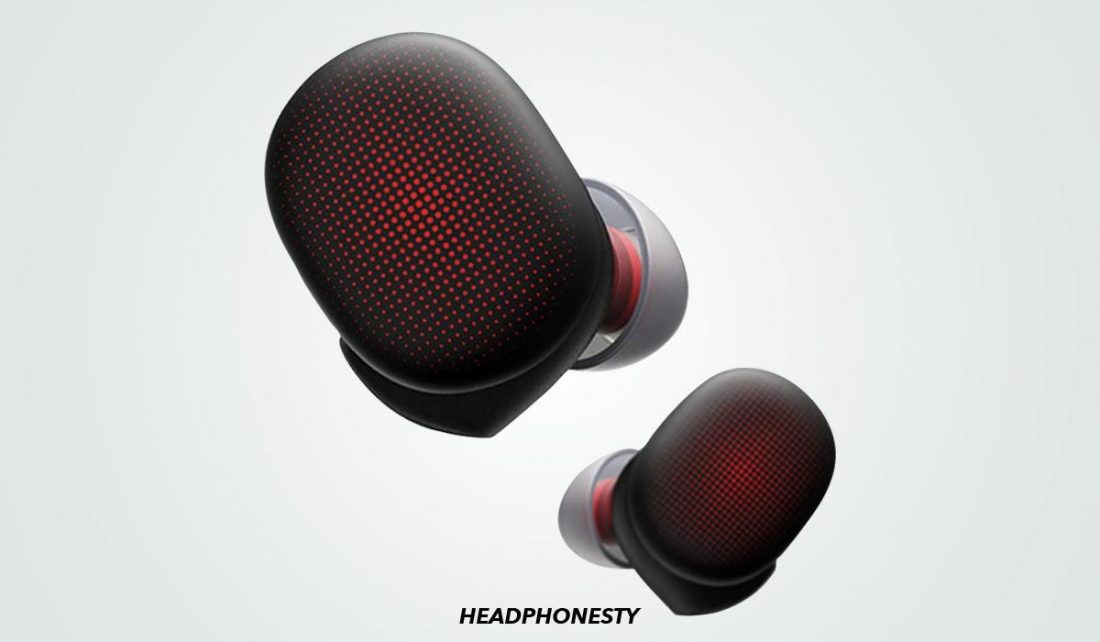
Key features
- Form Factor: True wireless in-ears
- Real-time Heart Alerts: In-app and voice alerts
- Battery Life: 8 Hours, 15 Minutes for 3 Hours
- IP Rating: IP55
- Companion App: AmazFit
- Heart Rate Sensor Placement: Right Earbud
- Other Features: Comes with a charging case, Optional magnetic sport ear hooks, Motion Beat Mode, Thru Mode, Wearing Detection, Dual Microphone Noise Reduction
The AmazFit PowerBuds is a pair of do-it-all earphones that simply gets everything right plus more. Developed by one of the authorities when it comes to sports wearables, you simply could not go wrong with this.
These headphones come with a unique feature called Motion Beat Mode. Azamfit developed this feature to help users fully benefit from the music during workouts by increasing the bass. It also has a Thru Mode which increases awareness — something that’s very important for joggers and runners.
The heart rate sensor of the AmazFit PowerBuds is on the right earbud. When your heart rate is getting a little too high, the earphones will warn you via a voice notification, while the app will notify you as well.
Speaking of the app, AmazFit’s companion app allows you to set a certain heart rate, space, time, and other more exercise warnings to help you monitor your activity.
With an 8-hour battery life, the PowerBuds are among the longest-lasting ones on this list. It also has fast charging that can bring out 3 hours of playtime with just 15 minutes on the plug. In addition to that, the earphones’ charging case can also provide an additional 24 hours of battery life.
If you’re not yet impressed, these earphones also have wearing detection and dual microphone noise reduction to help you communicate better. It also features magnetic sport ear hooks that you can use for better stability — something you’ll need to ensure the PPG measures accurately.
Bose SoundSport Pulse
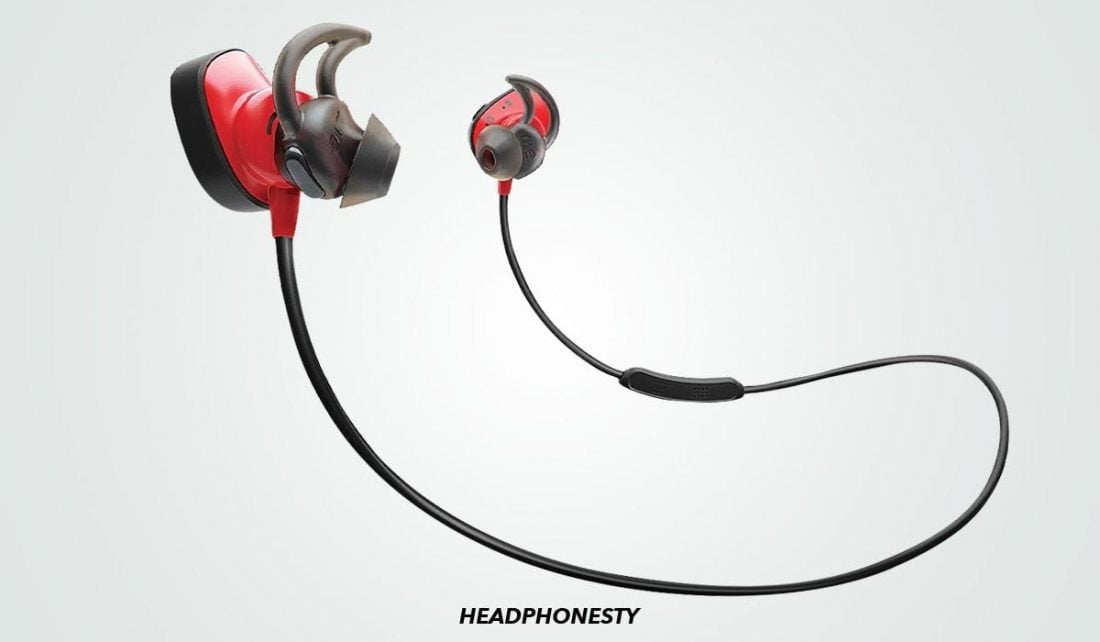
Key features
- Form Factor: In-ears with neckband
- Real-time Heart Alerts: In-app
- Battery Life: 5 Hours
- IP Rating: IPX4
- Companion App: Bose Connect
- Heart Rate Sensor Placement: Left earbud
- Other Features: NFC Pairing, StayHear+ ear tips, Compatible with other fitness apps, Inline controls
The Bose SoundSport Pulse sports great reviews for durability and functionality. These headphones pretty much have everything you need for a pair of heart rate headphones but the AmazFit PowerBuds are just plain better in certain areas.
The SoundSport are NFC-enabled in-ear headphones with a neckband that has inline controls. This allows users to access certain functions without opening their phones, which is very convenient. It also features the StayHear+ ear tips – a type of sweat and weather-resistant sport ear tips that ensures the earphones stay still and provide a better heart rate reading.
Compared to the PowerBuds, SoundSport just has a lower IP rating and battery life. The headphones can run for 5-6 hours, which is still not that bad. Meanwhile, it has an IPX4 rating which is just a level lower than PowerBuds’ IP55.
Bose Connect is the proprietary app of the said brand so it goes without saying that the SoundSport works best with this. However, one of its biggest advantages over the PowerBuds and other devices is that it is also compatible with other fitness apps.
To be more specific, you may also monitor your heart rate with SoundSport using MapMyRun, RunKeeper, and Runtastic.
While the Bose SoundSport boasts of great sound and build quality, the relatively low battery life and low IP rating can be deal breakers for some. Apart from that, another drawback is the absence of voice notifications for your heart rate. It also doesn’t help that they are almost twice the price of the AmazFit PowerBuds. If not for those things, though, this would be the top pick.
LifeBEAM Vi Sense
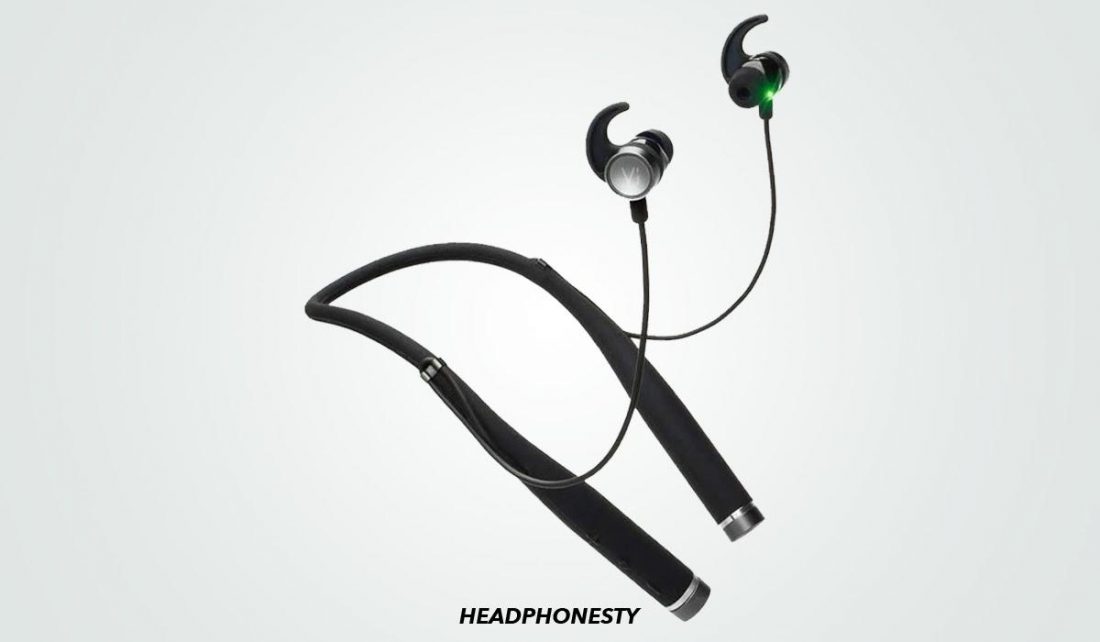
Key features
- Form Factor: In-ears with weighted neckband
- Real-time Heart Alerts: In-app and voice
- Battery Life: 8 hours
- IP Rating: IPX5
- Companion App: Vi Trainer App
- Heart Rate Sensor Placement: Both
- Other Features: Real-time workout feedback, Inline controls
From one of the most expensive on this list, let’s now go to the LifeBEAM Vi Sense. Despite the low price, these heart rate headphones have caught the eyes (and ears) of many. Although lacking in additional features, it makes up for it with a very powerful fitness app.
To start, these in-ear monitors feature a weighted neckband to provide stability during your workouts. This also helps the heart rate monitor read properly by ensuring that the eartips do not move as much. The same neckband has inline controls for volume for convenience.
LifeBEAM Vi Sense’s heart rate sensor is on both earphones. Although this does not directly affect the heart rate reading, it assures users that if one monitor fails for some reason, the other one will be there to keep the heart rate monitor running. It also has both in-app and voice notifications to read and warn you about your heart rate.
As mentioned, its biggest asset is perhaps the Vi Trainer App. This app is the first-ever AI personal trainer that uses real-time tracking to help you work out better. It can constantly remind you of how much distance you need to run, how many reps you need to do, and more. In addition to that, it also uses the biometric sensors on the Vi Sense to customize your workout experience.
Perhaps its biggest drawback really is the lack of other special functions. Yet again, if you’re looking for a pair of cheap heart rate headphones, this one would really get the most out of your budget.
Philips ActionFit SN503
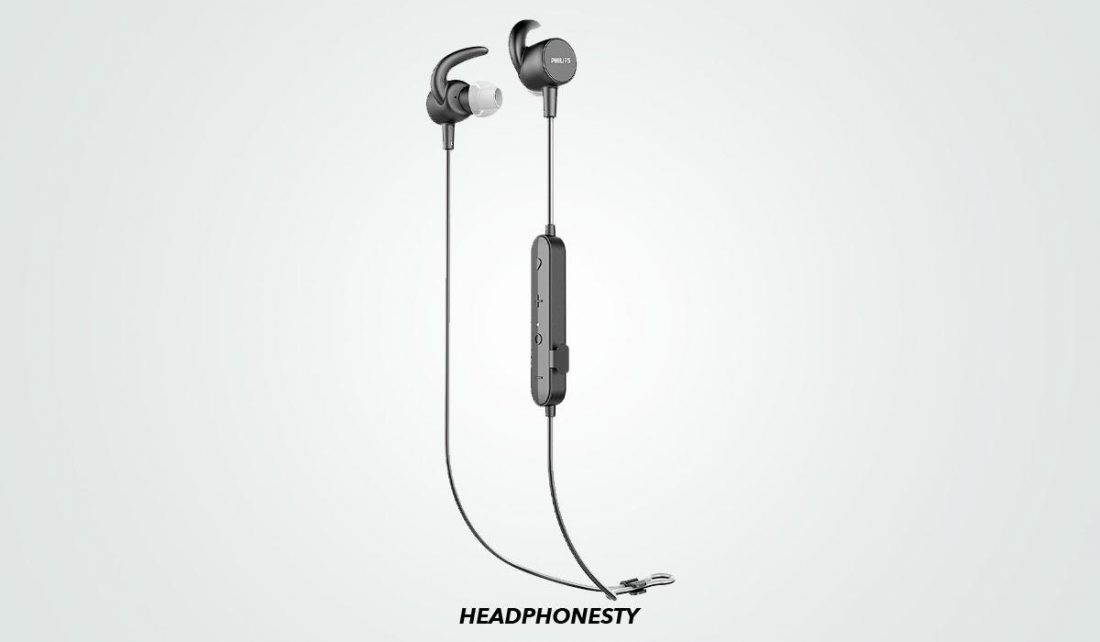
Key features
- Form Factor: In-ears with weighted neckband
- Real-time Heart Alerts: In-app and voice
- Battery Life: 6 hours, 2 hours to full charge
- IP Rating: IPX5
- Companion App: Compatible with various fitness apps
- Heart Rate Sensor Placement: Left earbud
- Other Features: 12.2mm neodymium drivers
Philips is one of the most recognizable audio brands. You would expect a brand like this to have their products inside a bubble exclusive to each other. With that, it’s a little bit surprising that the biggest advantage of the ActionFit SN503 is its compatibility with other apps.
The headphones have the heart rate sensor on their right earbud and they can be used with virtually any fitness app of your choice right now. This includes top fitness apps like Strava and Runkeeper on top of the Philips Headphones Applications.
Moreover, if you need any updates on your stats while working out, you can access real-time alerts with a click of a button.
On top of it all, the ActionFit SN503 boasts a pretty good set of features as well. It has 6 hours of playtime, and it will only take 2 hours to fully charge. It also has an IPX5 rating, which means that it is just as water-resistant as the AmazFit PowerBuds.
These headphones are the successors to the Philips ActionFit SHQ6500. With the SH503, Philips was able to improve the IPX2 durability and the 4.5-hour battery life. The predecessor also has Bluetooth 4.0 while this version got the 5.0 upgrade.
Being the advocates of good music quality, Philips has also included 12.2 neodymium drivers for clearer midrange and deeper bass. However, apart from that, there isn’t anything that makes these headphones stand above the rest. Despite that, we can say that Philips has done an admirable job of creating headphones for the people.
Jabra Elite Sport Earbuds
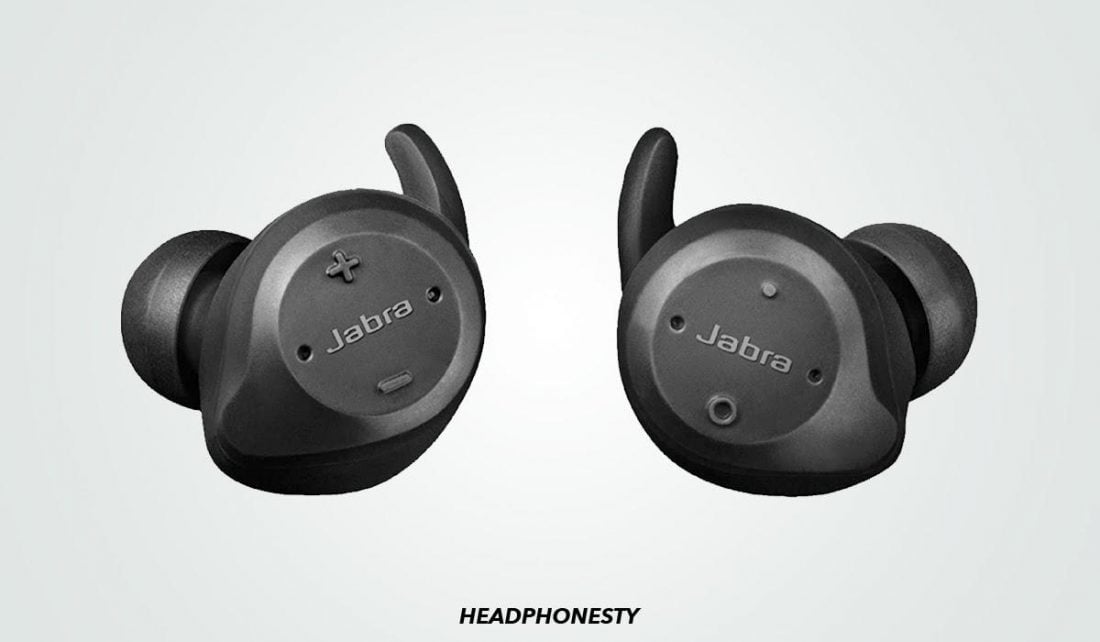
Key features
- Form Factor: True wireless in-ears
- Real-time Heart Alerts: In-app and voice
- Battery Life: 5 hours
- IP Rating: IP67
- Companion App: Jabra Sport Life
- Heart Rate Sensor Placement: Both
- Other Features: Comes with a charging case, 3-year warranty against sweat damage, four in-ear microphones, multiple functions through the companion app (automatic repetition counting, activity analysis, pace calculator, and personal coaching, etc.)
The Jabra Elite Sport Earbuds is one of the more popular sports headphones in the market today. It has a complete set of features plus more unique abilities developed by Jabra. Much like the Vi Sense, these headphones also have a powerful and very useful app behind them.
These TWS earphones have a heart rate sensor on both earbuds and the real-time heart alerts come via the app or voice notification. The battery life leaves a lot to be desired at 4-5 hours, but its charging case makes up for it perfectly.
It has an IP67 rating, making it the highest-rated one on this list. The 6 rating for dust resistance is the highest any device can get. On the other hand, the 7 rating for water resistance means that it can be submerged up to 1 meter of water for 30 minutes. A 3-year warranty comes with the device for sweat damage which gives us an idea of how confident Jabra is about their product.
Apart from all those, the Jabra Elite Sport is filled with smart functions through the Jabra Sport Life App. It has features like automatic repetition counting, activity analysis, pace calculator, and personal coaching to name a few. This powerful app is nothing short of helpful.
The only chink in its armor is the durability. Despite the eye-popping IP rating, the device itself seems to be a little fragile than we’d prefer. A lot of users have called them out for this already. Despite that, this is a great pair of sports earphones from a notoriously great brand.
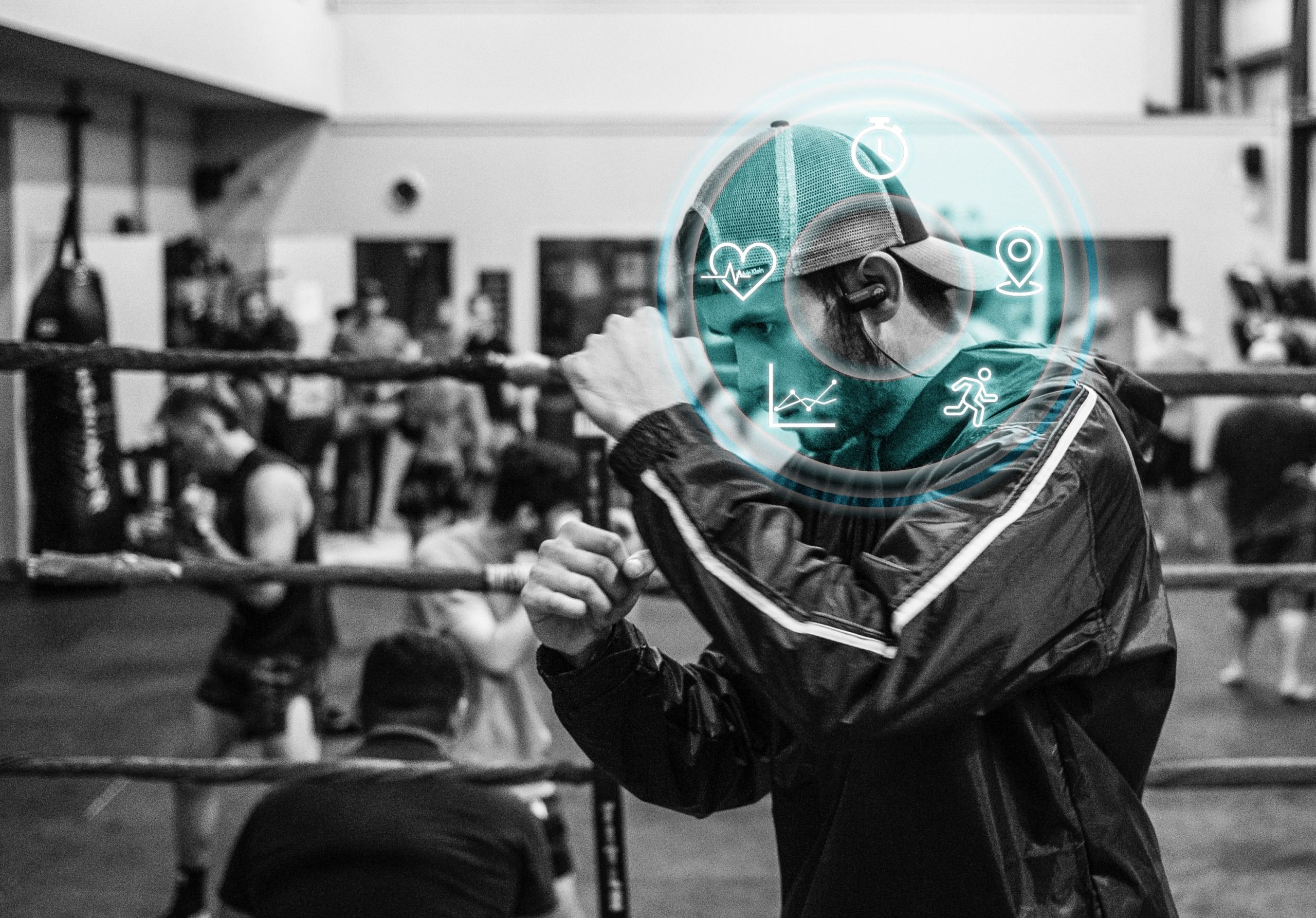
The real time alert on the Philips SN503 can also be activated using the first button on the control. The control is on the right side, the HR sensor is also on the right side and not the left side per your article.
Hi Kow! Thanks for the correction. We updated the article accordingly.
Jabra seems to have a problem with the outer casing falling off right around the time the warranty ends. As expensive as they are, I would not go with this brand, as this cannot be fixed.
Happened to me too, but I had warranty
I gave these ear buds 15 running workouts over 25 days. I found them difficult to keep connected to the heart rate monitoring feature (or it would run off without finding its way back to my actual HR) without frequently removing the right earbud, allowing the HR feature to fall off, and then reseting the bud into my ear. Additionally, the left ear bud would not produce the same volume (almost to a mute) as the right bud. This too would take several removals and resets to synchronize. Both of these challenges forced me to return them…still hunting for a suitable replacement.